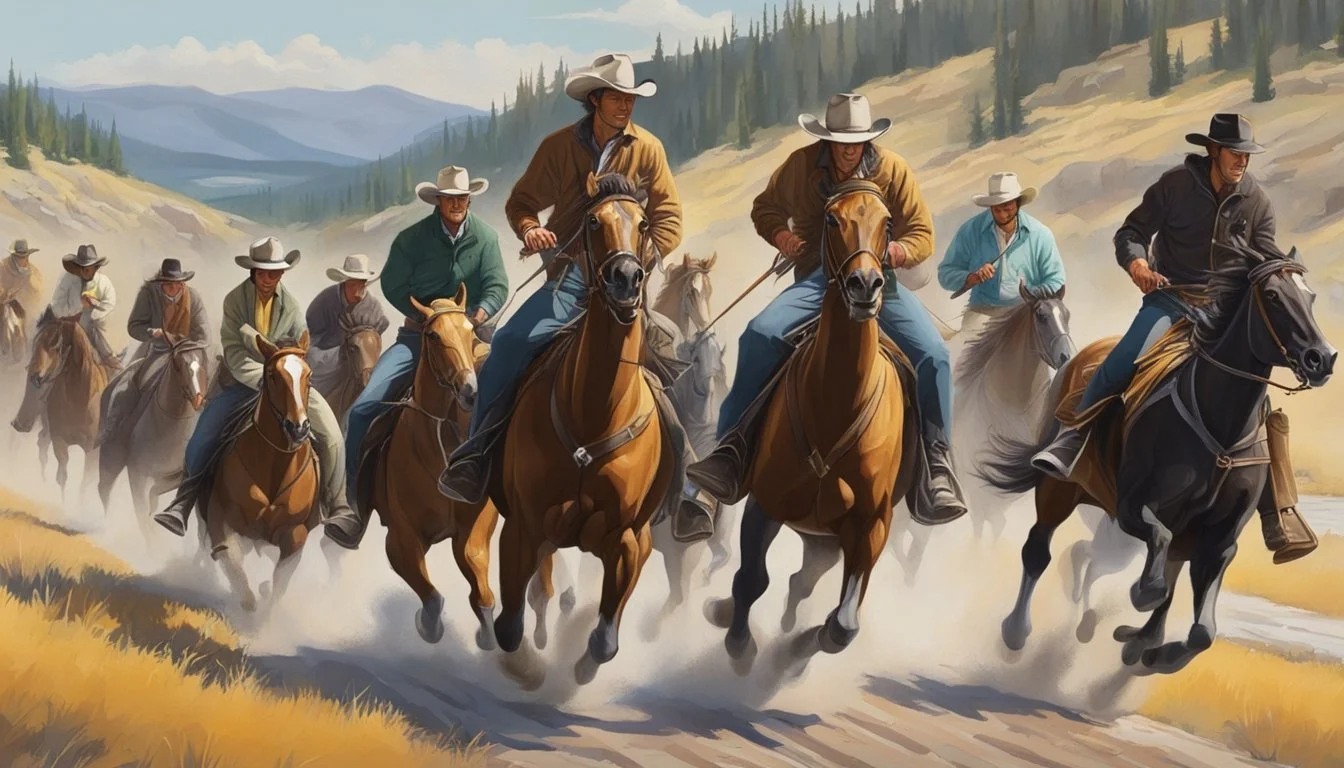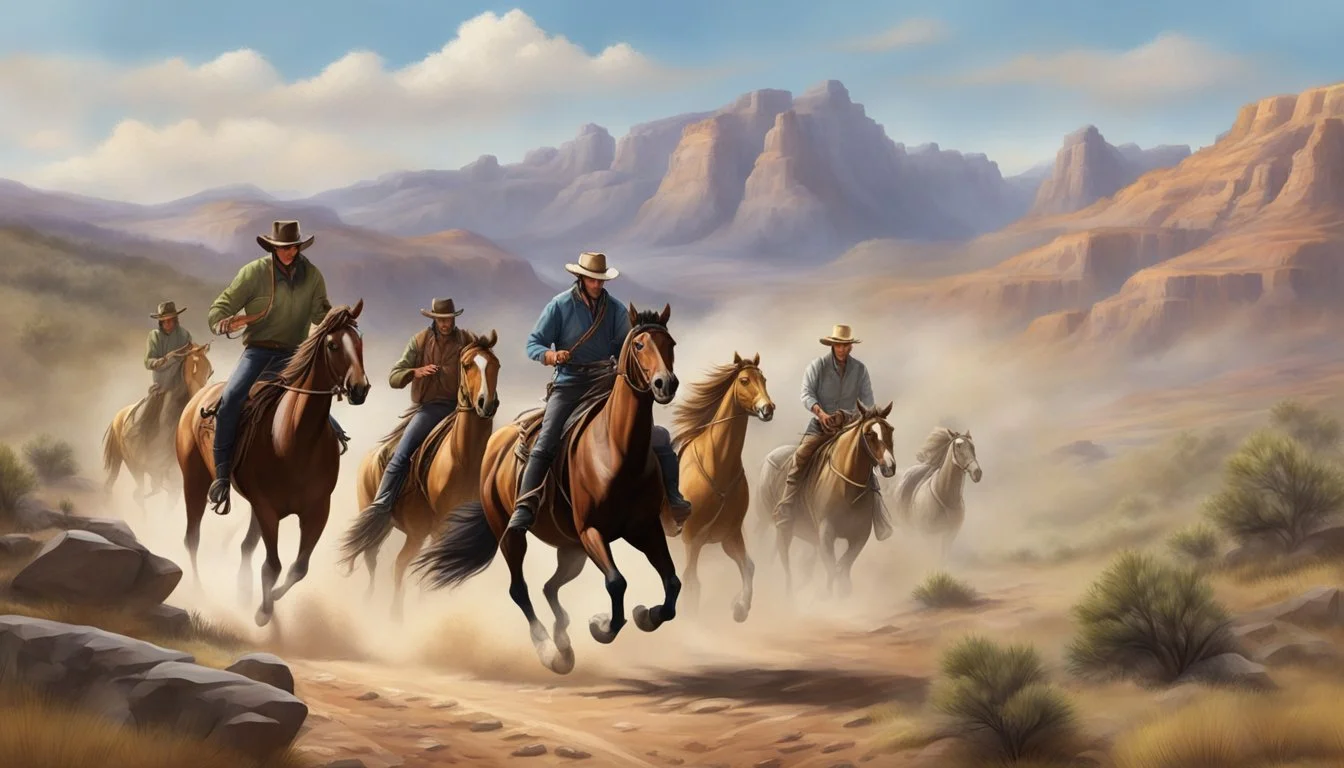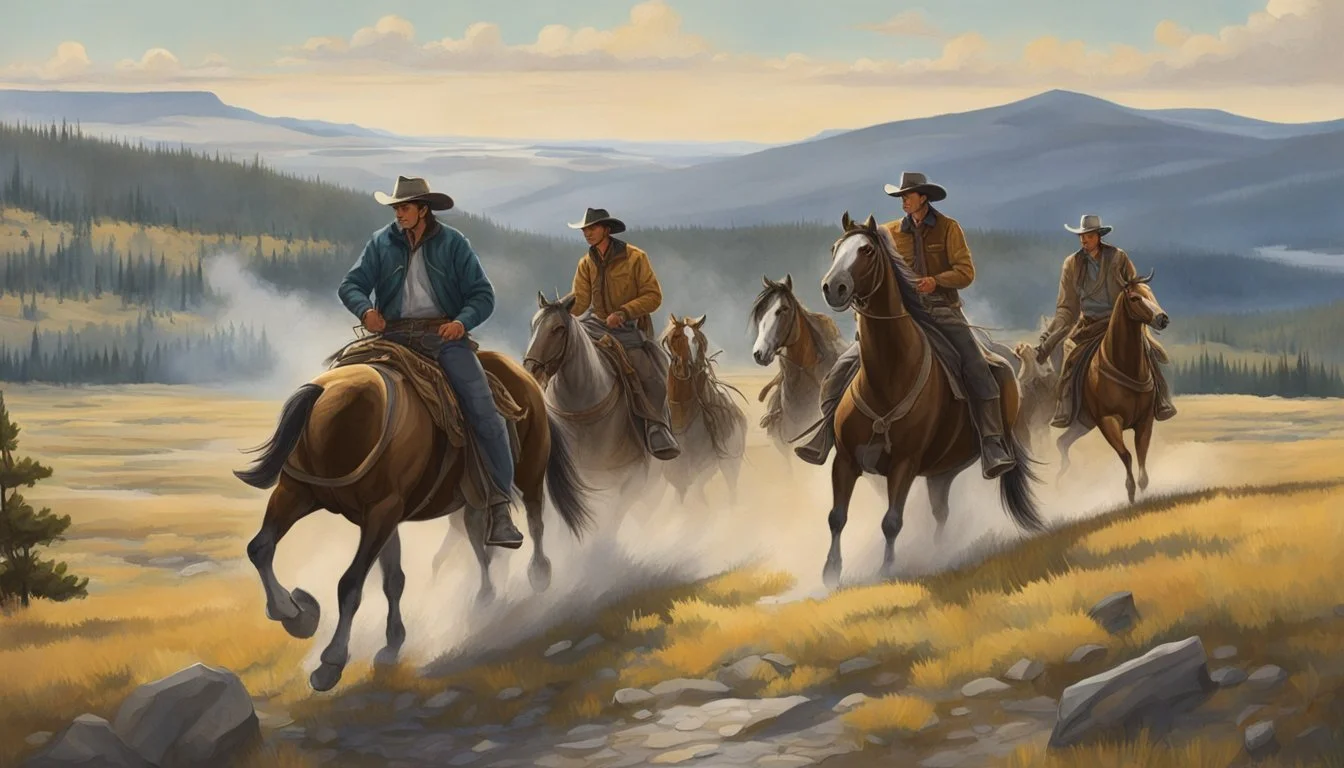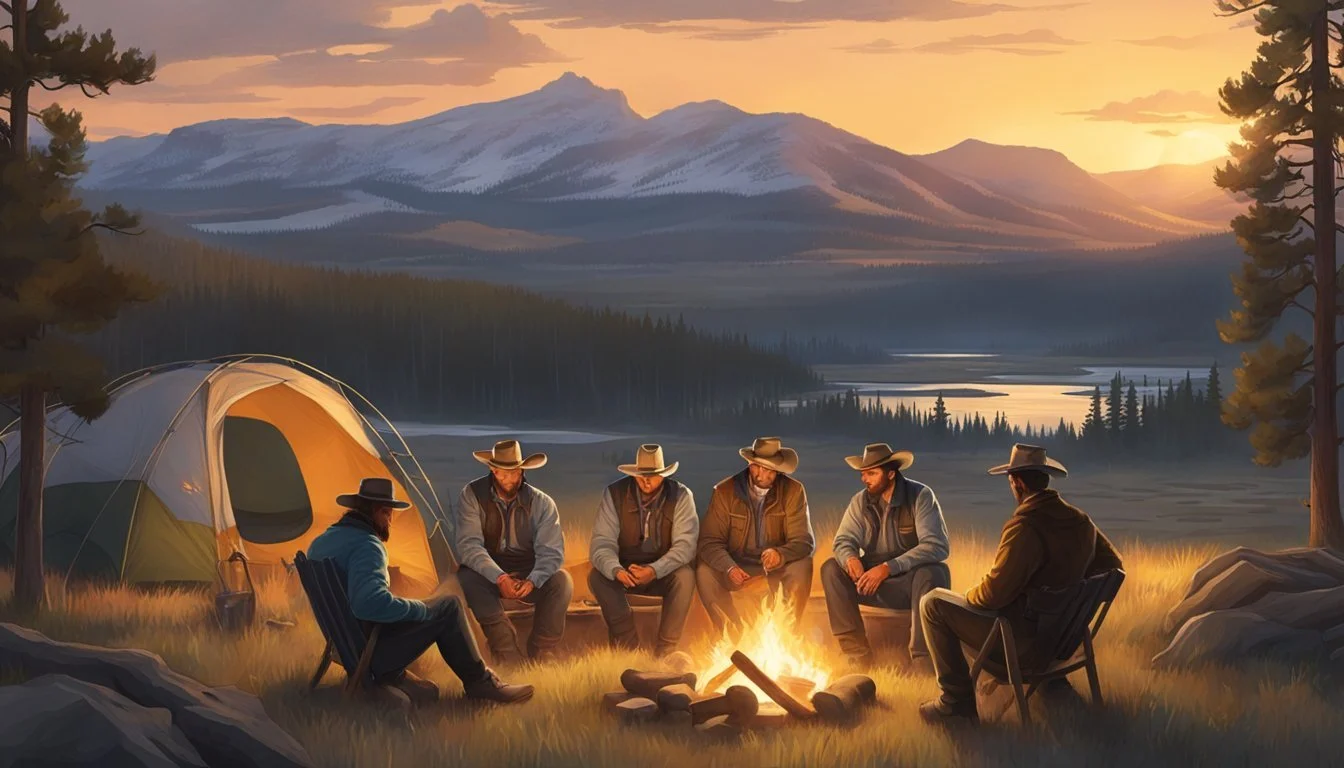Discover the Jaw-Dropping Size of Yellowstone Ranch That Will Leave You Speechless
The Yellowstone Dutton Ranch, centerpiece of the hit TV series "Yellowstone," captivates viewers with its sprawling size and breathtaking Montana landscapes. Fans often wonder about the true scale of this fictional ranching empire.
The Yellowstone Dutton Ranch is described in the show as being "the size of Rhode Island," which equates to approximately 776,900 acres. This massive expanse of land dwarfs most real-world ranches, emphasizing the Dutton family's wealth and power within the series' narrative.
While the fictional ranch is inspired by real Montana properties, its size is greatly exaggerated for dramatic effect. The actual filming location, Chief Joseph Ranch in Darby, Montana, spans a more modest 2,500 acres. This stark contrast between reality and fiction underscores the show's larger-than-life portrayal of ranching in the American West.
Overview of the Yellowstone Series
Yellowstone is a gripping television drama set against the backdrop of Montana's rugged landscape. The series revolves around the Dutton family's struggles to maintain control of their vast ranch while facing threats from various adversaries.
Background and Setting
Yellowstone premiered on the Paramount Network in 2018, created by Taylor Sheridan. The show is set in Montana, centered on the fictional Yellowstone Dutton Ranch. This sprawling property serves as the heart of the series, mirroring real-life massive ranches in the American West.
The ranch's immense size is a key element of the show's plot. While exact figures vary, it's suggested to span hundreds of thousands of acres. This vast expanse of land becomes a character in itself, shaping the conflicts and challenges faced by the Dutton family.
Main Characters and Plot
At the core of Yellowstone is John Dutton, portrayed by Kevin Costner. As the patriarch of the Dutton family, he fiercely protects his ranch and legacy. The series explores the complex dynamics within the Dutton family and their interactions with external forces.
Key plot elements include:
Land disputes with developers and Native American reservations
Political maneuvering to maintain control of the ranch
Family conflicts and power struggles
The show's intensity builds with each season, with Season 4 and Season 5 introducing new challenges and adversaries. Yellowstone's blend of family drama, political intrigue, and stunning landscapes has captivated audiences, making it a standout in modern television.
Geographic and Historical Context
Montana's rugged landscape and rich history provide a compelling backdrop for the Yellowstone series. The show draws inspiration from real events and figures that shaped the American West.
Montana's Significance to the Story
Montana's vast prairies and towering mountains create an ideal setting for the Dutton family saga. The state's ranching heritage dates back to the 1800s, with large cattle operations playing a crucial role in its development. Montana's harsh climate and remote location present unique challenges for ranchers, mirroring the struggles faced by the Duttons.
The show's fictional Yellowstone Dutton Ranch spans an estimated 776,000 acres, rivaling the size of Rhode Island. This immense property showcases Montana's expansive landscapes and highlights the power wielded by large landowners in the region.
Historical Insights from 1883 and 1923
The prequels 1883 and 1923 offer glimpses into the Dutton family's past and Montana's early days. 1883 depicts the arduous journey westward, illustrating the harsh realities faced by pioneers. The series showcases the dangers of crossing the plains and the challenges of establishing new lives in an untamed land.
1923 explores Montana during the Prohibition era, a time of significant social and economic change. The show portrays the impacts of drought, economic hardship, and evolving technologies on ranching communities. These historical contexts provide depth to the Dutton family's legacy and their connection to the land.
Nez Perce and Chief Joseph
The Chief Joseph Ranch, where Yellowstone is filmed, holds historical significance tied to the Nez Perce War of 1877. This conflict between the U.S. government and the Nez Perce tribe, led by Chief Joseph, left a lasting impact on the region.
The war resulted from attempts to force the Nez Perce onto reservations, leading to a 1,170-mile retreat as the tribe sought refuge in Canada. Chief Joseph's famous surrender speech, "I will fight no more forever," marked the end of this tragic chapter in American history.
The ranch's name pays homage to Chief Joseph, recognizing the area's complex past and the enduring legacy of Native American tribes in Montana.
Ranch as a Central Theme
The sprawling Yellowstone Ranch serves as the heart of the show, shaping the characters' lives and driving the plot forward. Its vast acreage and stunning Montana backdrop create a vivid setting for the series' exploration of family, power, and the struggle to preserve a way of life.
Ranching in Big Sky Country
Montana's rugged landscapes provide the perfect backdrop for Yellowstone's portrayal of modern ranching. The show depicts the daily operations of a large cattle ranch, from branding and roundups to negotiations with neighboring landowners. The Yellowstone Ranch, inspired by real Montana properties, spans an estimated 776,000 acres - comparable in size to Rhode Island.
The series showcases the challenges faced by ranchers in the region, including harsh weather conditions, predators, and economic pressures. It also highlights the deep connection between ranchers and their land, emphasizing the importance of stewardship and tradition in maintaining these vast properties.
The Dutton Family's Connection to the Land
The Dutton family's multi-generational ties to the Yellowstone Ranch form the core of their identity and motivations. John Dutton, the patriarch, views the ranch not just as property but as a legacy to be protected at all costs. This deep-rooted connection drives the family's actions and conflicts throughout the series.
The show explores how each family member's relationship with the ranch shapes their character and decisions. From Jamie's legal maneuvers to Kayce's struggle between ranch life and his Native American wife's world, the land influences every aspect of the Duttons' lives.
Challenges of Land Ownership and Development
Yellowstone vividly portrays the tensions between traditional ranching and modern development in Montana's Paradise Valley. The Duttons face constant threats from land developers, like Market Equities, who seek to transform the area into tourist destinations and housing developments.
The series delves into complex issues surrounding land rights, including conflicts with the neighboring Broken Rock Indian Reservation led by Chief Thomas Rainwater. Water rights, particularly access to the Bitterroot River, become a key point of contention. These storylines reflect real-world debates about land use, conservation, and economic development in the American West.
Physical Size and Properties
The Yellowstone ranch depicted in the TV series is a vast expanse of land with impressive structures and landmarks. Its sheer size and notable features set it apart from most real-world ranches.
Exploring the Expanse of the Yellowstone Ranch
The Yellowstone ranch, known as the Dutton Ranch in the show, is portrayed as an enormous property. Its size is often compared to that of Rhode Island, which covers approximately 776,900 acres.
John Dutton, the ranch's owner, claims it's "a ranch the size of Rhode Island." This suggests the fictional ranch encompasses around 776,000 acres.
The ranch's size has reportedly increased over time. Jamie Dutton mentions it has grown by 200,000 acres since he became the attorney, indicating ongoing expansion.
Notable Landmarks and Structures
The ranch features several iconic structures that contribute to its character and functionality. The main house serves as the Dutton family's residence and the center of ranch operations.
A bunkhouse provides accommodation for the ranch hands. This structure plays a significant role in the daily life and social dynamics of the ranch workers.
The property likely includes various outbuildings, barns, and corrals necessary for managing a large-scale cattle operation. These facilities would be essential for housing livestock, storing equipment, and supporting ranch activities.
Comparison with Real-World Ranches
While the Yellowstone ranch is fictional, it draws inspiration from real-world properties. The King Ranch in Texas, spanning 825,000 acres, is the largest ranch in the United States.
The W.T. Waggoner Ranch in Texas, covering 520,000 acres, is another example of a massive real-world property. These ranches demonstrate that while the Yellowstone ranch is exceptionally large, properties of similar scale do exist.
The show's primary filming location is the Chief Joseph Ranch in Darby, Montana. This 2,500-acre property serves as the backdrop for many exterior scenes, though it's significantly smaller than the fictional Dutton Ranch.
Cultural and Social Influence
Yellowstone has emerged as a cultural phenomenon, shaping perceptions of modern ranching and the American West. The show's portrayal of ranch life and stunning Montana landscapes has captivated audiences nationwide.
Representation of Ranching Lifestyle
Yellowstone offers viewers a glimpse into the complexities of running a large-scale cattle ranch in Big Sky Country. The series showcases the daily challenges faced by the Duttons and their staff, from managing vast pastures to tending Quarter Horses. This authentic depiction has rekindled interest in traditional Western values and lifestyles.
The show highlights the economic pressures and land disputes that modern ranchers encounter, particularly in areas like Park County. It also explores the delicate balance between preserving ranching heritage and navigating contemporary issues, such as conflicts with neighboring Native American reservations like the fictional Broken Rock Reservation.
Impact on Tourism and Local Business
Yellowstone's popularity has significantly boosted tourism in Montana, particularly in areas where the show is filmed. Ravalli County and other filming locations have seen a surge in visitors eager to experience the breathtaking landscapes featured in the series.
Local businesses, including hotels, restaurants, and tour operators, have benefited from the influx of Yellowstone-inspired tourists. Many offer themed experiences, such as horseback riding tours and visits to working cattle ranches, allowing fans to immerse themselves in the world portrayed on screen.
The show has also influenced fashion trends, with Western-inspired clothing and accessories gaining popularity. This renewed interest in cowboy culture has created new economic opportunities for local artisans and retailers in Montana and beyond.
Accommodations and Public Access
The Yellowstone Ranch offers limited accommodations and experiences for visitors interested in exploring its vast landscapes. While primarily a working cattle ranch, it provides select lodging options and activities that allow guests to immerse themselves in the ranch lifestyle.
Information on Lodging and Rentals
The Chief Joseph Ranch, which serves as the filming location for the Yellowstone Dutton Ranch, offers cabin rentals to the public. Two cabins are available for guest stays: the Ben Cook Cabin and the Fisherman Cabin. These structures, featured prominently in the show, provide an authentic ranch experience.
The cabins are rustic yet comfortable, reflecting the rugged charm of Montana's landscape. Guests can enjoy scenic views of the surrounding mountains and pastures from their accommodations. Reservations are required well in advance due to high demand and limited availability.
Activities and Experiences Offered
Visitors to the Yellowstone Ranch can participate in various ranch-related activities. Guided horseback rides allow guests to explore the expansive property and take in breathtaking vistas. Fishing excursions on nearby rivers offer opportunities to catch trout in pristine waters.
The ranch also provides tours of key filming locations, including the iconic Dutton family home, barns, and bunkhouse. Guests can learn about cattle ranching operations and the day-to-day workings of a large-scale ranch.
During certain seasons, visitors may observe or participate in cattle drives, giving them a taste of authentic ranch life. Photography enthusiasts can capture stunning landscapes and wildlife throughout the property.







